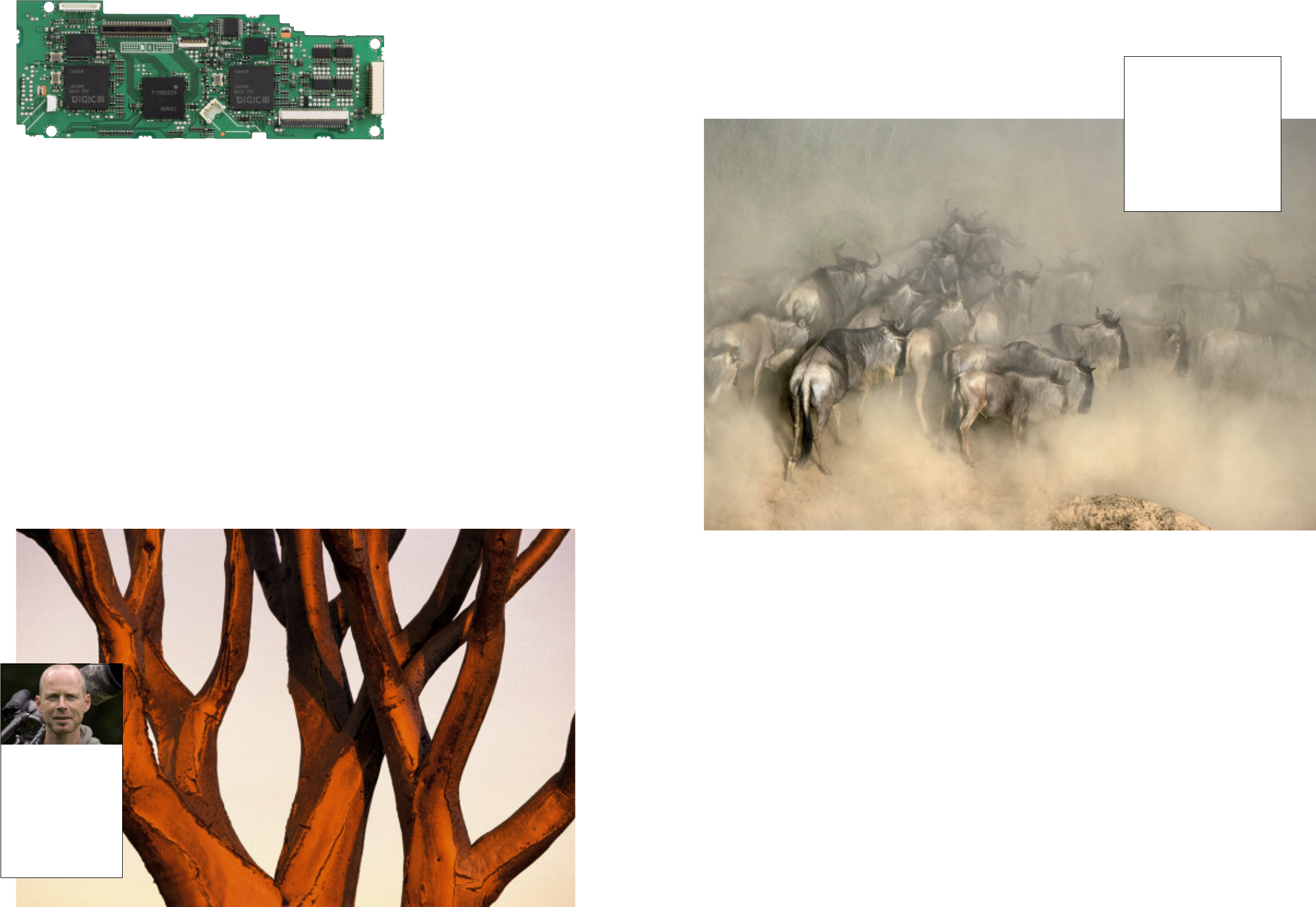
Ingo Arndt
Wildlife photographer
“The quiver tree in Namibia
always makes a dramatic
subject. It’s actually a kind
of overgrown aloe that can
grow to nine metres tall and
live for 300 years.”
SLR Cameras
CMOS
Every digital EOS camera features Canon’s CMOS sensor technology
– developed, designed and built in-house by Canon. One of Canon’s
core technology platforms, CMOS gives the EOS range a number of
distinct advantages.
CMOS sensors are easier on power than other sensor types. An amplifier
at each CMOS sensor pixel site avoids unnecessary charge transfer
operations, vastly speeding up the process of getting the signal to the
image processor. This is one of the reasons for the fast frame rates of EOS
cameras. Having amplifiers at each pixel site also reduces the heat which
otherwise causes noise, particularly noticeable at high ISO settings and
long exposure times.
Secondly, having sensor development and manufacture in house allows
Canon to produce a range of purpose built sensors, with each sensor
specified to meet the exact requirements of the EOS model for which it
is intended.
DIGIC
Canon’s revolutionary DIGIC image processors work at the heart of
every EOS digital camera. It is the power of DIGIC that delivers the
superb EOS image quality, responsive camera performance, faster AF,
faster continuous shooting and extended battery life.
Many times faster than other image processors, DIGIC II has been developed
by Canon’s engineers for the specific purpose of performing the super high
speed calculations necessary to providing exceptionally accurate colour
reproduction in real time.
DIGIC technology does not run as software, but as hardware built into
the camera's circuitry. As such it is able to carry out the duties of a number
of separate processing units, effectively replacing them to save time,
space and power.
DIGIC processors are so fast they can read, process, compress and
write image data back to the buffer between exposures, reducing the data
bottleneck for extended continuous shooting.
Michel Denis-Huot
World Press Photo winner
“We parked on the riverbank near
a known crossing point. Then, we
waited. It was a long time before
the herd appeared. They stood for
several hours until one brave
wildebeest plucked up the courage
to dive in and cross. And the rush
was on. An hour later, they were
all gone.”
Magic moments
Wildlife photographer and World Press Photo winner Michel Denis-Huot has
been using Canon’s EOS system to capture the wildlife of the Masai Mara for
nearly 20 years.
“What animal photography is really about is searching for
the impossible,” says Michel. “You can go for days and days
without seeing anything particularly extraordinary. And then,
suddenly, there’s that magic moment right in front of you.”
After 32 years photographing the plains of Africa, Michel is all too
familiar with the unpredictability of his subjects. “The problem
is that you can never plan what an animal is going to do. So you
can’t leave anything else to chance. You must know when and
where they are likely to appear. And be prepared to wait.”
“That special shot combines magical light, perfect positioning,
and great action from the animal. Sometimes when you take
a picture, you know immediately that everything is right.”
Digital SLR
Dual “DIGIC III” processors for
enhanced speed and image quality

















